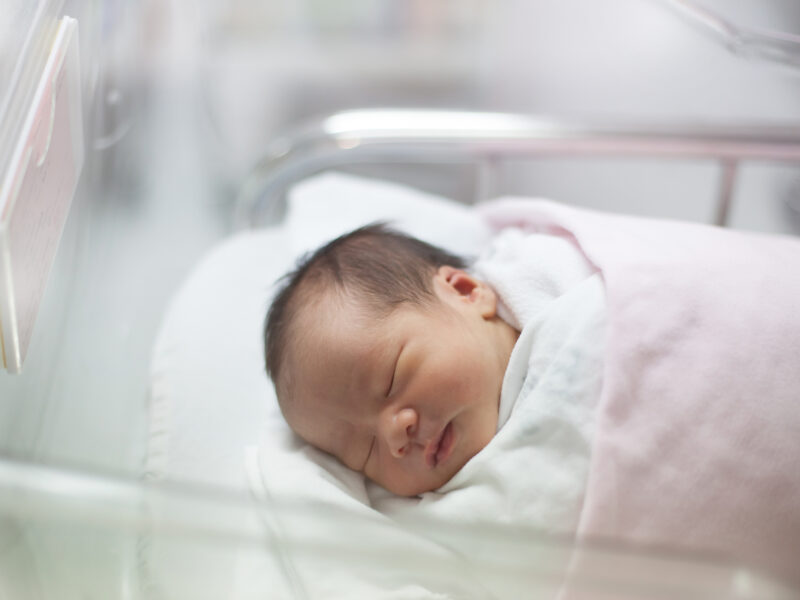Predicting Response to Bronchodilators in Infants with Bronchopulmonary Dysplasia
Predicting Response to Bronchodilators in Infants with Bronchopulmonary Dysplasia https://pediatricsnationwide.org/wp-content/uploads/2022/07/091021BS0082-1024x683.jpg 1024 683 Mary Bates, PhD Mary Bates, PhD https://secure.gravatar.com/avatar/c6233ca2b7754ab7c4c820e14eb518c8?s=96&d=mm&r=g- September 06, 2022
- Mary Bates, PhD

Study emphasizes importance of identifying those patients who will respond to treatment.
Certain pulmonary function test parameters in newborns with bronchopulmonary dysplasia are associated with bronchodilator response, according to a new study from researchers at Nationwide Children’s Hospital. The team also found that responders had evidence of greater dysanaptic lung growth than nonresponders.
Bronchodilators are often used to treat newborns with bronchopulmonary dysplasia (BPD). While some patients respond to this treatment, others do not, and there is little evidence to guide therapy.
In the new study, researchers sought to identify pulmonary function test parameters capable of predicting bronchodilator response in infants with BPD. They studied data collected from infants hospitalized in the neonatal intensive care unit with BPD who were referred for their first pulmonary function testing between May 2003 and October 2015.
In this cohort of patients with BPD, most — about 63% — were responsive to bronchodilators. Testing revealed that responders had more hyperinflation than did nonresponders.
Leif Nelin, MD, division chief of neonatology at Nationwide Children’s and the study’s first author, says the findings suggest the degree of hyperinflation may underlie bronchodilator response in BPD, with patients with greater obstruction at baseline more likely to have hyperinflation and be responsive to bronchodilators.
“One of the take-home messages is that clinicians should figure out if their patient is responsive to bronchodilators before committing them to long-term use,” says Dr. Nelin. “If they are not responsive, and there’s going to be about a third of patients who are not, then you should not use bronchodilators.”
Interestingly, the group of responders demonstrated dysanaptic lung growth, suggesting that BPD patients who respond to bronchodilators likely have relatively smaller airways compared to their lung size than nonresponders.
“This suggests that, in terms of healing and future studies, we need to think about airway growth in addition to alveolar growth,” says Dr. Nelin, who is also a professor of pediatrics at The Ohio State University College of Medicine.
The researchers say that further studies are needed to better predict bronchodilator response in patients with BPD. And with increasing evidence suggesting infants with BPD may experience pulmonary issues well into childhood and even adulthood, a better understanding of how airway growth and lung growth are related is needed.
“Understanding how the airways and lung tissue itself grow in BPD patients will give us a better idea of how disease progresses in these patients,” says Dr. Nelin. “This relationship between airway growth and lung growth may prove important. Finding ways to improve both airway and lung growth may shorten the course of the disease and improve outcomes, especially longer-term respiratory outcomes, in these patients.”
Reference:
Nelin LD, Kielt MJ, Jebbia M, Jadcherla S, Shepherd EG. Bronchodilator responsiveness and dysanapsis in bronchopulmonary dysplasia. ERJ Open Research. 2022 Jul 4;8(3):00682-2021. doi: 10.1183/23120541.00682-2021.
About the author
Mary a freelance science writer and blogger based in Boston. Her favorite topics include biology, psychology, neuroscience, ecology, and animal behavior. She has a BA in Biology-Psychology with a minor in English from Skidmore College in Saratoga Springs, NY, and a PhD from Brown University, where she researched bat echolocation and bullfrog chorusing.
-
Mary Bates, PhDhttps://pediatricsnationwide.org/author/mary-bates-phd/December 27, 2016
-
Mary Bates, PhDhttps://pediatricsnationwide.org/author/mary-bates-phd/
-
Mary Bates, PhDhttps://pediatricsnationwide.org/author/mary-bates-phd/
-
Mary Bates, PhDhttps://pediatricsnationwide.org/author/mary-bates-phd/
- Posted In:
- Clinical Updates
- In Brief
- Research






